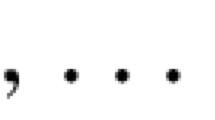Abstract
We show entireness of complete adjoint L-functions associated to any cuspidal representations of \({{\,\mathrm{GL}\,}}(3)\) or \({{\,\mathrm{GL}\,}}(4)\) over an arbitrary number field. Twisted cases are also investigated.
Similar content being viewed by others
References
Altuğ, S.A.: Beyond endoscopy via the trace formula: I. Poisson summation and isolation of special representations. Compos. Math. 151(10), 1791–1820 (2015a)
Altuğ, S.A.: Beyond endoscopy via the trace formula-III the standard representation. J. Inst. Math. Jussieu 20, 1–39 (2015b)
Altuğ, S.A.: Beyond endoscopy via the trace formula, II: Asymptotic expansions of Fourier transforms and bounds towards the ramanujan conjecture. Am. J. Math. 139(4), 863–913 (2017)
Arthur, J.: An introduction to the trace formula. Harmonic Analysis, the Trace Formula, and Shimura Varieties, volume 4 of Clay Mathematical Proceedings, pp. 1–263. American Mathematical Society, Providence (2005)
Bump, D., Friedberg, S., Goldfeld, D.: Poincaré series and Kloosterman sums. The Selberg Trace Formula and Related Topics, (Brunswick, Maine, 1984), volume 53 of Contemporary Mathematics, pp. 39–49. American Mathematical Society, Providence (1986)
Bump, D., Ginzburg, D.: The adjoint \(L\)-function of \({\rm GL}(4)\). J. Reine Angew. Math. 505, 119–172 (1998)
Bushnell, C.J., Henniart, G.: Calculs de facteurs epsilon de paires pour \({\rm GL}_n\) sur un corps local. I. Bull. Lond. Math. Soc. 31(5), 534–542 (1999)
Beuzart-Plessis, R., Liu, Y., Zhang, W., Zhu, X.: Isolation of cuspidal spectrum, with application to the Gan–Gross–Prasad conjecture. arXiv preprintarXiv:1912.07169 (2019)
Brumley, F.: Effective multiplicity one on gl n and narrow zero-free regions for Rankin–Selberg l-functions. Am. J. Math. 128(6), 1455–1474 (2006)
Cogdell, J.W.: Lectures on \(L\)-functions, converse theorems, and functoriality for \({\rm GL}_n\). Lectures on Automorphic \(L\)-Functions, Volume 20 of Fields Institute Monographs, pp. 1–96. American Mathematical Society, Providence (2004)
Deligne, P.: Les constantes locales de l’équation fonctionnelle de la fonctionl d’artin d’une représentation orthogonale. Invent. Math. 35(1), 299–316 (1976)
Finis, T., Lapid, E.: On the continuity of Arthur’s trace formula: the semisimple terms. Compos. Math. 147(3), 784–802 (2011)
Flicker, Y.Z.: The adjoint representation \(L\)-function for \({\rm GL}(n)\). Pac. J. Math. 154(2), 231–244 (1992)
Flicker, Y.Z.: On zeroes of the twisted tensor \(L\)-function. Math. Ann. 297(2), 199–219 (1993)
Ginzburg, D., Hundley, J.: The adjoint \(L\)-function for \({\rm GL}_5\). Electron. Res. Announc. Math. Sci. 15, 24–32 (2008)
Ginzburg, D.: A Rankin–Selberg integral for the adjoint representation of \({\rm GL}_3\). Invent. Math. 105(3), 571–588 (1991)
Gelbart, S., Jacquet, H.: A relation between automorphic representations of \({\rm GL}(2)\) and \({\rm GL}(3)\). Ann. Sci. École Norm. Sup. (4) 11(4), 471–542 (1978)
Ginzburg, D., Jiang, D.: A Siegel–Weil identity for g2 and poles of l-functions. J. Numb. Theory 82(2), 256–287 (2000)
Henniart, G.: Une preuve simple des conjectures de Langlands pour \({\rm GL}(n)\) sur un corps \(p\)-adique. Invent. Math. 139(2), 439–455 (2000)
Hoffstein, J., Lockhart, P.: Coefficients of Maass forms and the Siegel zero. Ann. Math. (2) 140(1), 161–181 (1994). With an appendix by Dorian Goldfeld, Hoffstein and Daniel Lieman
Harris, M.: The Geometry and Cohomology of Some Simple Shimura varieties, voluxme 151 of Annals of Mathematics Studies. Princeton University Press, Princeton (2001). With an appendix by Vladimir G. Berkovich
Hundley, J., Zhang, Q.: Adjoint l-functions for gl (3) and u (2, 1). arXiv:1808.06285 (arXiv preprint) (2018)
Jacquet, H.: Smooth transfer of Kloosterman integrals. Duke Math. J. 120(1), 121–152 (2003)
Jacquet, H.: Archimedean Rankin–Selberg integrals. Automorphic Forms and \(L\)-Functions II. Local Aspects, Volume 489 of Contemporary Mathematics, pp. 57–172. American Mathematical Society, Providence (2009)
Jacquet, H., Lai, K.F., Rallis, S., et al.: A trace formula for symmetric spaces. Duke Math. J. 70(2), 305–372 (1993)
Jacquet, H., Lapid, E.: A spectral identity for skew symmetric matrices. Contributions to Automorphic Forms, Geometry, and Number Theory, pp. 421–455. Johns Hopkins University Press, Baltimore (2004)
Jacquet, H., Piatetskii-Shapiro, I.I., Shalika, J.A.: Rankin–Selberg convolutions. Am. J. Math. 105(2), 367–464 (1983)
Jacquet, H., Zagier, D.: Eisenstein series and the Selberg trace formula. II. Trans. Am. Math. Soc. 300(1), 1–48 (1987)
Knapp, A.W.: Local Langlands correspondence: the Archimedean case. Motives (Seattle, WA, 1991), volume 55 of Proceedings of Symposia in Pure Mathematics, pp. 393–410. American Mathematical Society, Providence (1994)
Lafforgue, L.: Chtoucas de Drinfeld et correspondance de Langlands. Invent. Math. 147(1), 1–241 (2002)
Lapid, E.: On the Harish–Chandra Schwartz space of \(G(F)\backslash G({\mathbb{A}})\). Automorphic Representations and \(L\)-Functions, Volume 22 of Tata Institute of Fundamental Research Studies in Mathematics, pp. 335–377. Tata Institute of Fundamental Research, Mumbai (2013). With an appendix by Farrell Brumley
Labesse, J.-P., Langlands, R.P.: L-indistinguishability for \(SL(2)\). Can. J. Math. 31(4), 726–785 (1979)
Luo, W., Rudnick, Z., Sarnak, P.: On the generalized Ramanujan conjecture for gl (n). Proceedings of Symposia in Pure Mathematics, vol. 66, pp. 301–310. American Mathematical Society, Providence (1999)
Matz, J.: Arthur’s trace formula for \({\rm GL}(2)\) and \({\rm GL}(3)\) and non-compactly supported test functions. PhD thesis, Dissertation, Universität Bonn (2011)
Murty, M.R., Raghuram, A.: Some variations on the Dedekind conjecture. J. Ramanujan Math. Soc. 15(4), 225–245 (2000)
Shahidi, F.: Eisenstein Series and Automorphic \(L\)-Functions, Volume 58 of American Mathematical Society Colloquium Publications. American Mathematical Society, Providence (2010)
Shimura, G.: On the holomorphy of certain Dirichlet series. (3). Proc. Lond. Math. Soc 31(1), 79–98 (1975)
Springer, T.A.: Linear Algebraic Groups. Modern Birkhäuser Classics, 2nd edn. Birkhäuser Boston Inc, Boston (2009)
Tate, J.: Number theoretic background. In: Automorphic forms, representations and \(L\)-functions (Proceedings of Symposium in Pure Mathematics, Oregon State University, Corvallis, Ore., 1977), Part 2, Proceedings of Symposium in Pure Mathematics, XXXIII, pp. 3–26. American Mathematical Society, Providence (1979)
Tian, F.: On the Archimedean local gamma factors for adjoint representation of \({{\rm GL}}_3\). Part I. Pac. J. Math. 304(1), 303–345 (2020)
Uchida, K.: On Artin \(L\)-functions. Tohoku Math. J. 2(27), 75–81 (1975)
van der Waall, R. W.: On a conjecture of Dedekind on zeta-functions. Nederl. Akad. Wetensch. Proc. Ser. A 78 Indag. Math. 37, 83–86 (1975)
Weil, André: Basic Number Theory, 3rd ed (1974). Springer-Verlag, New York (Die Grundlehren der Mathematischen Wissenschaften, Band 144)
Yang, L.: A Coarse Jacquet–Zagier Trace Formula for GL\((n)\) with Applications. (2019) (preprint, submitted)
Zagier, D.: Modular forms whose Fourier coefficients involve zeta-functions of quadratic fields. In: Modular functions of one variable, VI (Proceedings of Second International Conference, University of Bonn, Bonn, 1976). Lecture Notes in Mathematics , Vol. 627, pp 105–169 (1977)
Acknowledgements
I am very grateful to my advisor Dinakar Ramakrishnan for instructive discussions and helpful comments. I would like to thank Ashay Burungale, Li Cai, Hervé Jacquet, Dihua Jiang, Simon Marshall, Kimball Martin, Yiannis Sakellaridis, Chen Wan and Xinwen Zhu for their precise comments and useful suggestions. Part of this paper was revised during my visit to École polytechnique fédérale de Lausanne in Switzerland and I would like to thank them for their hospitality.
Author information
Authors and Affiliations
Corresponding author
Additional information
Communicated by Wei Zhang.
Publisher's Note
Springer Nature remains neutral with regard to jurisdictional claims in published maps and institutional affiliations.
Tables of notation
Tables of notation
F, \({\mathbb {A}}_F\) | number field and its adele ring |
\(\Sigma _F,\) \(\Sigma _{F,{{\,\mathrm{fin}\,}}},\) \(\Sigma _{F,\infty }\) | set of places of F; set of finite places; set of archimedean places |
E | field extension of F, with norm denoted by \(N_{E/F}\) |
G | the general linear group \({{\,\mathrm{GL}\,}}(n)\), with center \(Z_G\) |
\(\omega \) | central character, i.e., a unitary character of \(Z_G({\mathbb {A}}_F)\) |
\(\varphi \) | the test function in the trace formula |
\({\text {K}}(x,y)={\text {K}}^{\varphi }(x,y)\) | the kernel function in the trace formula relative to \(\varphi \) |
\({\text {K}}_0(x,y),\) \({\text {K}}_{{\text {Res}}}(x,y),\) \({\text {K}}_{{\text {Eis}}}(x,y)\) | part of \({\text {K}}(x,y)\) from cuspidal spectrum, residual spectrum, and continuous spectrum, respectively |
\({\text {K}}_{\infty }(x,y)={\text {K}}_{{\text {Eis}}}(x,y)+{\text {K}}_{{\text {Res}}}(x,y)\) | non-cuspidal kernel |
\(\Xi _F\) | set of unitary characters on \(F^{\times }\backslash {\mathbb {A}}_F^{\times }\) which are trivial on \({\mathbb {R}}^{\times }_+\) |
\(\mathcal {S}_0({\mathbb {A}}_F^n)\) | space of generalized Gaussians defined in Sect. 1.3 |
\(\eta =(0,0,\ldots ,0,1)\) | a vector in \(F^n\) |
\(f(x,s)=f(x,\Phi ,\tau ;s)\) | a Tate integral defined in Sect. 1.3, \(\tau \in \Xi _F,\) \(\Phi \in \mathcal {S}_0({\mathbb {A}}_F^n)\) |
P | in first two sections it means the standard parabolic subgroup of G of type \((n-1,1);\) from Sect. 3 it represents an arbitrary standard parabolic subgroup |
B, N | B is the standard Borel subgroup (i.e., nonsingular upper triangle matrices), with unipotent radical N |
\(P_0,\) \(B_0\) | \(Z_G\backslash P\) (the mirabolic subgroup), \(Z_G\backslash B,\) respectively |
\(E(x,s)=E_P(x,\Phi ,\tau ;s)\) | Eisenstein series defined in Sect. 1.3 |
\(\pi ,\) \({\tilde{\pi }}\) | cuspidal representation and its contragredient |
\(\Lambda (s,\pi ,{\text {Ad}}\otimes \tau ),\) \(\Lambda (s,\tau )\) | complete adjoint L-function of \(\pi \) twisted by \(\tau \); complete Hecke L-function of \(\tau \) |
\(L(s,\pi ,{\text {Ad}}\otimes \tau ),\) \(L(s,\tau )\) | finite adjoint L-function of \(\pi \) twisted by \(\tau \); finite Hecke L-function of \(\tau \) (i.e., with archimedean factors removed) |
\(\theta ,\) C(w), \(Q_k,\) \(X_G,\) \(R_k,\) \(V_k,\) \(V_k',\) \(N_k,\) \(\Psi _s,\) F(x, T) | notations defined in Sect. 2.1 |
\({\mathbb {G}}_m\), \({\mathbb {G}}_a\) | the multiplicative group and the additive group |
S | parabolic subgroup of \({{\,\mathrm{GL}\,}}(4)\) of type (2, 1, 1); and \(S_0=Z_G\backslash S\) |
Q | parabolic subgroup of \({{\,\mathrm{GL}\,}}(4)\) of type (1, 2, 1) |
\({\text {K}}^{(k)}(x,y)={\text {K}}_{\infty }^{(k)}(x,y),\) \(k\ge 2\) | geometric expression for the spectral contribution \({\text {K}}_{\infty }^{(k)}(x,y)\) in the Fourier expansion (see (12)) |
\(\mathcal {R}(1/2;\tau )^-\) | the domain defined in (57) |
\(\mathcal {D}_{\chi }(\epsilon ),\) \(\mathcal {R}(\beta ;\chi ,\varvec{\epsilon })\) | zero free regions (see (63) and (64)); and \(\mathcal {C}\) is certain boundary (see Sect. 3.1) |
\(\Psi (s,W_1,W_2;\lambda )\) | Rankin–Selberg periods for non-cuspidal representations (see (55)) |
\(R_{\varphi }(s,\lambda ;\phi _2)\) | ratio of \(\Psi (s,W_1,W_2;\lambda )\) and the L-function (see (59)) |
\(\mathcal {F}(\varvec{\kappa };s)=\mathcal {F}(\varvec{\kappa };s,P,\chi )\) | defined to be \(R_{\varphi }(s,\varvec{\kappa };\phi )\Lambda (s,\pi _{\varvec{\kappa }}\otimes \tau \times {\widetilde{\pi }}_{-\varvec{\kappa }})\) (see Sect. 3.1) |
\(\mathcal {Z}_{m,P}(s,\tau )\) | partial residues of \(I_{\infty }^{(1)}(s,\tau )\) defined in (65) |
Rights and permissions
About this article
Cite this article
Yang, L. Holomorphy of adjoint L-functions for GL(n): \(n\le 4\). Math. Ann. 381, 1745–1805 (2021). https://doi.org/10.1007/s00208-021-02189-4
Received:
Revised:
Accepted:
Published:
Issue Date:
DOI: https://doi.org/10.1007/s00208-021-02189-4




